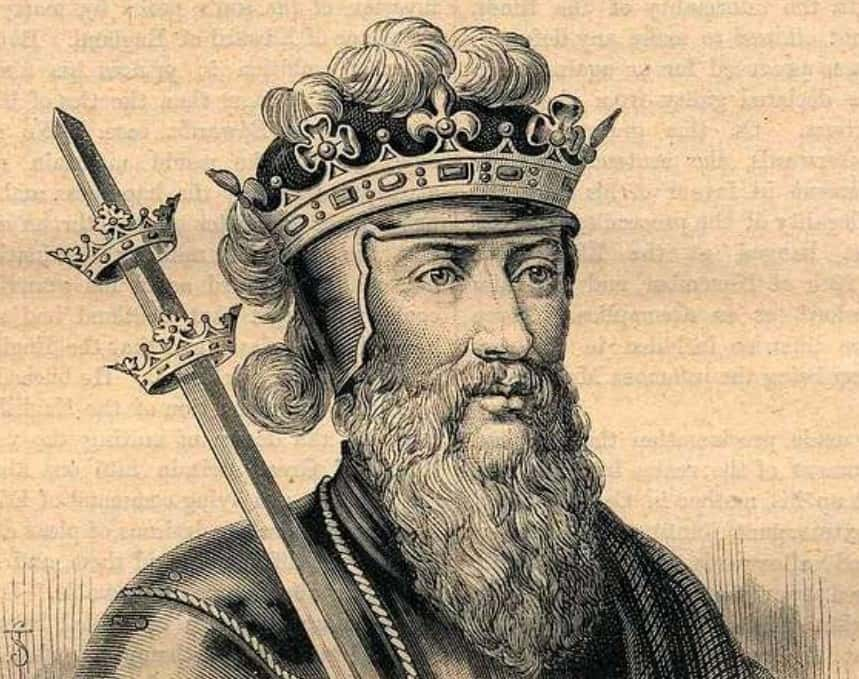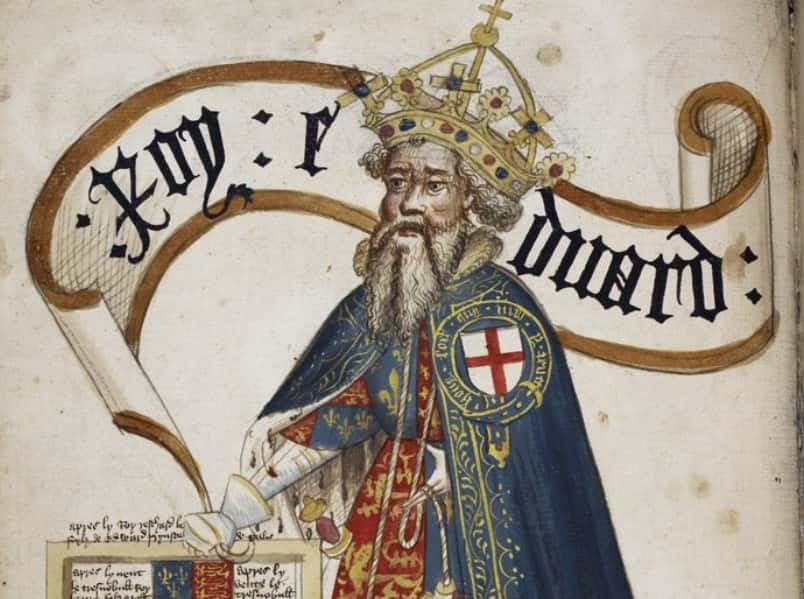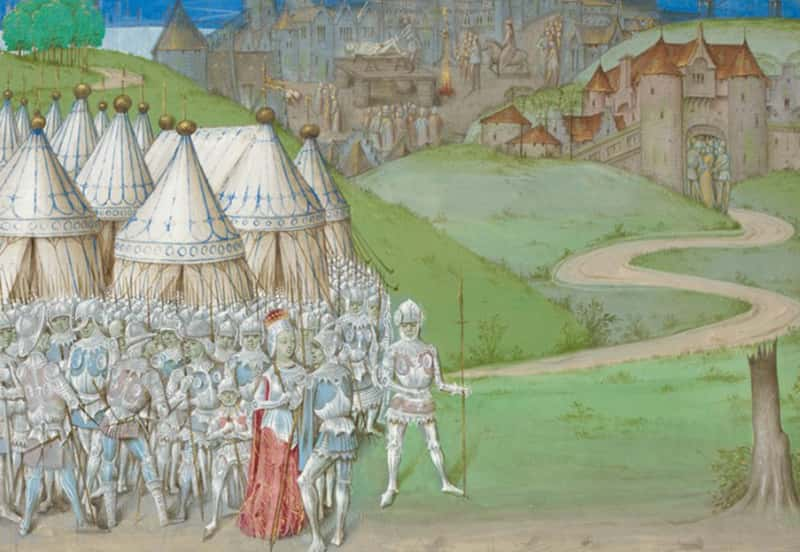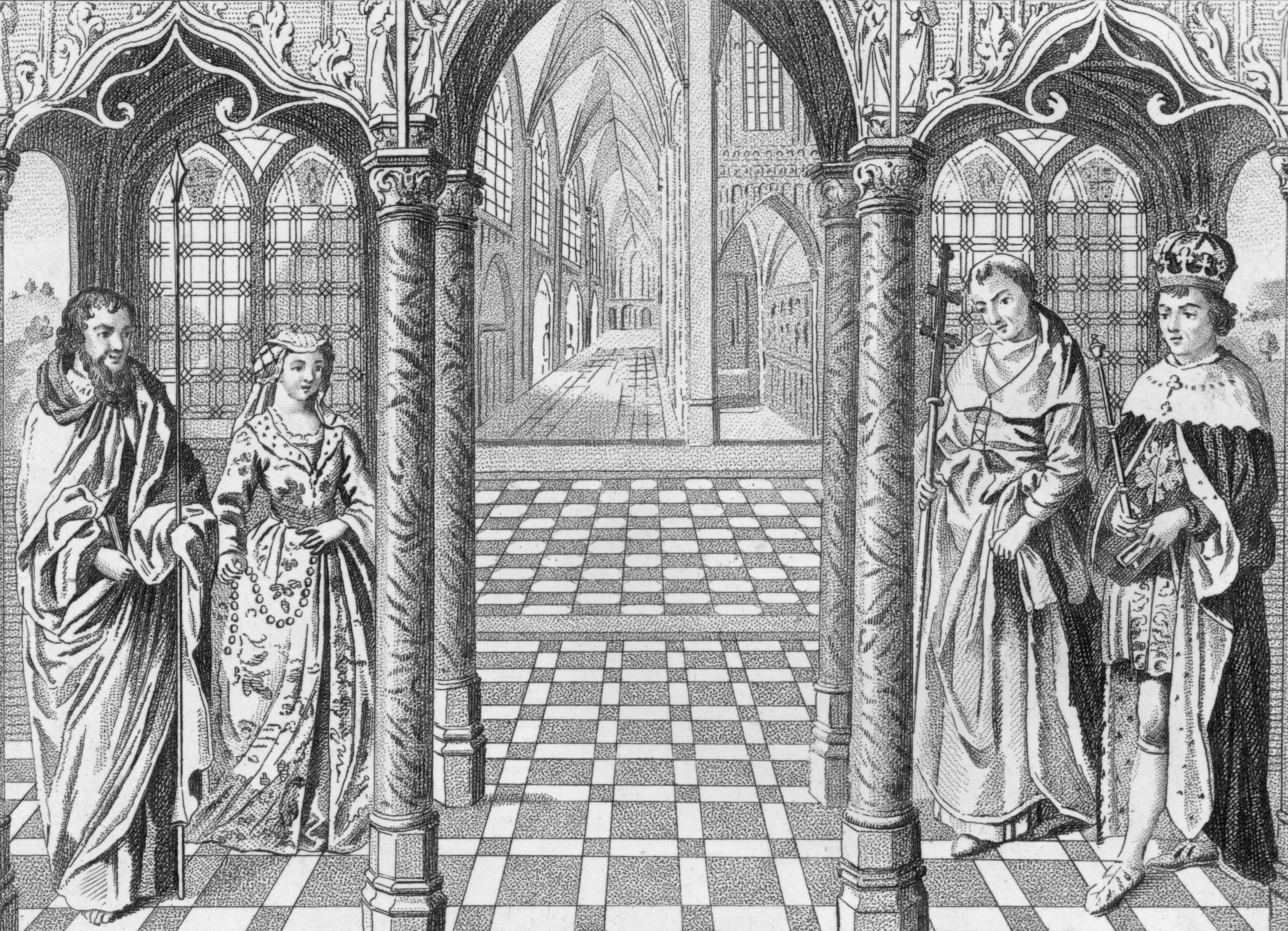King Edward III, The Puppet King
If there was one thing which defined the reign of King Edward III of England, it was war. In the long years of his reign, England was embroiled in one conflict or another, including one of the most devastating wars in European history. But while Edward’s defensive accomplishments loom large in English history, there is far more to the man than just his highlights. Continue reading here to find out more about this fascinating ruler who inspired debate and contention ever since his rule began.

1. The King is Born
Edward was born on November 13 in the year 1312. He was the son of King Edward II of England and Isabella of France.

2. Skipping a Step
Rare for English kings, Edward was never given the title "Prince of Wales" before he was crowned king. Of course, despite this omission, Edward never lacked for royal titles.
3. In Good Company
Edward was a member of the House of Plantagenet, a royal house that had ruled England since 1154 AD with the coronation of Henry II. This dynasty ruled England for more than 300 years until 1485, with the demise of Richard III in battle at Bosworth Field.
4. Rapid Promotion
By the time Edward was born, things were going badly for his father. Edward II was deeply unpopular because of his tendency to heap honors and wealth upon a few favorites in his royal court (including Piers Gaveston, rumored to be the king’s secret lover). Edward II’s position was so bad that the birth of Edward III was considered a significant improvement for his popularity, since he now at least had a male heir.
Edward II even leaned into this newfound goodwill by making his then-12-day-old son the Earl of Chester.
5. Some Context
At the time of Edward’s birth, the Kings of England claimed ownership of several regions of France. Prior to ruling England, the Plantagenet kings had been noblemen in France. The Duchy of Aquitaine was a region that they claimed, though that made them vassals to the King of France, at least according to the French.
6. Shame Avoided!
As you can imagine, Edward’s father was in a pretty bad position by 1325, having lost control of Scotland. He was less popular than ever. It was at this point that the King of France (who also happened to be his brother-in-law), insisted that Edward II come to France and perform homage in order to maintain control over Aquitaine.
Edward’s father saw this as a humiliation, but there was no way to refuse without incurring widespread conflict. In a rare act of ingenuity, Edward’s father appointed the teenage Edward as the Duke of Aquitaine so that Edward was the one traveling to France to give homage.
7. Long May He Reign
Partly due to his very young age at the time of his coronation, Edward reigned for more than 50 years as King of England. Only one other English king from the medieval era ruled longer than that. In case you’re wondering who that king might be, it was Edward’s great-grandfather, Henry III.
8. The Day that Treason Prospered
Unfortunately for Edward’s father, his sending Edward to France in 1325 proved to be a fatal mistake in the long term. Edward’s mother, Isabella, was well and truly fed up with her husband, and when she returned to her native France with the young Edward, she became intimately acquainted with an exiled English baron named Roger Mortimer.
A plan was hatched between Isabella, Mortimer, and Isabella’s brother, the King of France, to invade England and depose Edward II. Edward III, meanwhile, was distracted by an engagement to a young noblewoman named Philippa of Hainault.
9. Did He Also Build a Clubhouse for it?
Early in his reign, Edward III was profoundly obsessed with bringing chivalry to knighthood. Such was his interest in it that he created a new, elite brotherhood of knights known as the Order of the Garter. No more than thirty men were allowed in this order at any one time (two of whom were the King and the Prince of Wales).
The Order of the Garter exists to this day, ranking only behind the Victoria Cross and the George Cross in prestige.
10. Debunking Folklore
You might be wondering why Edward called his elite knight brotherhood the Order of the Garter. The legend behind the name stems from a court ball where the Countess of Salisbury’s garter slipped off her leg and fell to the ground to great ridicule. Edward, witnessing this faux pas, picked up the garter from the ground and returned it to the countess, stating a Latin phrase which meant "Shame on him who thinks ill of it".
This phrase later became the order’s motto. As good of a story as that is, this legend was first recorded in the 1460s, long after Edward’s demise. It’s thought that the story was first written to justify why this knighthood was named after women’s clothing. They were forgetting, of course, that in the 14th century, garters were part of men’s fashion as well.
11. Early Start
In 1326, the teenage Edward returned home from his homage in France as part of an invasion fleet that was led by his mother and Roger Mortimer. Edward’s father was quickly defeated in battle and was forced to give the kingship of England to his son. At age 14, Edward was crowned as Edward III on February 1, 1327.
12. It’s All Lion King Up in Here
Given his young age upon attaining kingship, Edward was overshadowed by his mother, Isabella, and Roger Mortimer, her lover (who also became regent). However, they proved to become even less popular than Edward’s father had been once they took power from him. Mortimer was greedy for lands and wealth, disrespecting the young king in the process.
Moreover, Mortimer and Isabella suffered a serious martial setback against the Scots in 1328. Edward was forced to sign his name onto a humiliating treaty with Scotland.
13. Where are My Royalties?
Edward makes a short appearance and is frequently discussed in Ken Follett’s bestselling 2007 novel World Without End. The book depicts the early stages of the Hundred Years’ War and the Black Death, which both took place during Edward’s reign.
14. Battle Spares Not the Innocent
During Edward's Siege of Calais, a brutal episode played out as the residents of Calais starved behind their walls. In an act of desperation, many women, children, and other non-combatants were sent out of the castle to fall upon the mercy of the besiegers. This was a common gesture made by castles under siege during that time.
However, there was no mercy to be found; Edward had no intention of making things easier on the people who were resisting him, so he refused to take responsibility for the hungry civilians. They were left to starve in the ditches around the castle, literally caught between the two sides of the conflict.
 World Without End (2012),Tandem Productions
World Without End (2012),Tandem Productions
15. Stained with Blood
Despite all we’ve said about Edward’s admiration for chivalry, the hard truth was that he was quite willing to throw it all away in favor of total chaos. In 1346, Edward laid siege to the fortified city of Caen. Much to everyone’s surprise, the English quickly seized control of the city in just a single day, though they failed to capture the castle of Caen.
While the castle stood, however, the English forces committed a barbaric mass-slaying, slaughtering at least half of Caen’s population. We can assume that the Order of the Garter didn’t mention this episode whenever they met up afterward.
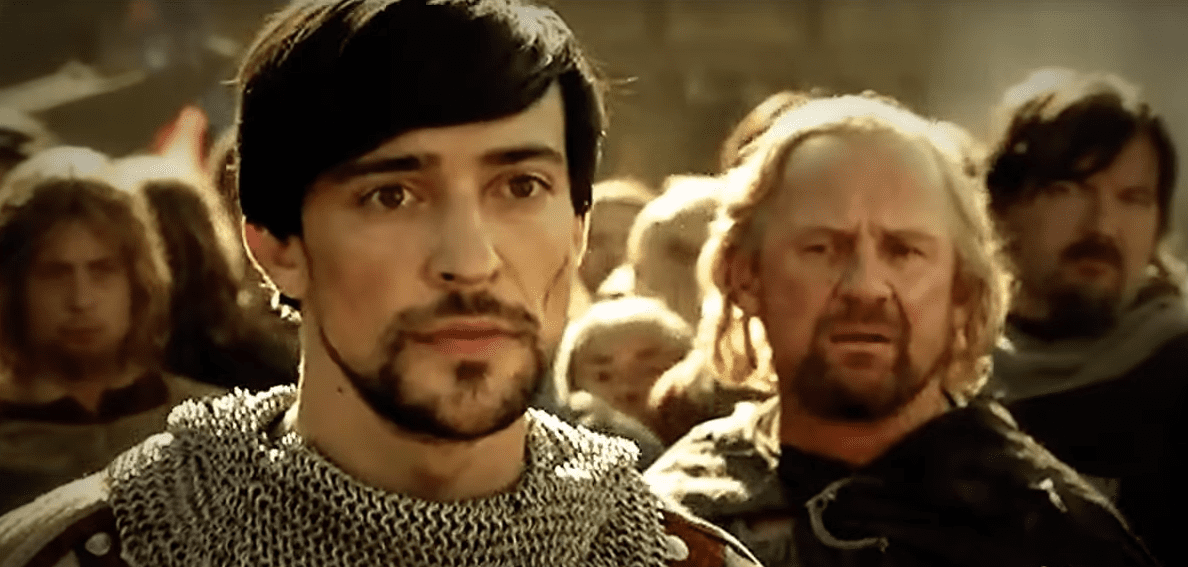 World Without End(2012), Tandem Productions
World Without End(2012), Tandem Productions
16. …I’m Coming Back for Everything!
In 1337, King Philip VI of France seized the Duchy of Aquitaine, which you might remember was the ancient property of the Plantagenet kings and the same one that Edward had paid homage for when he was in his early teens. In response to this turnaround, Edward not only demanded them back, but he also claimed the Kingdom of France itself.
He was able to do this because of his French mother and his maternal links to the French throne. Edward might not have planned for it, and Philip VI might not have predicted it, but these actions led to the Hundred Years’ War.
17. Generous with Titles
One thing which separated Edward’s reign from that of his father, Edward II, and his grandfather, Edward "Longshanks," was his approach to peerages. Given the trouble that the barons and nobles gave to his father and grandfather during their lives, neither was interested in making more of them. Edward, however, was able to befriend his noblemen and win them over with his personality.
As a result, he was only too happy to create new titles. They also proved useful to lead armies and units into battle. In 1337, when Edward was on the cusp of the Hundred Years War, he created six new earls in a single day!
18. My Boy Billy
Speaking of those six earls that Edward had created in a single day, one of those men was named William de Bohun. Distantly related to Edward through his paternal grandfather, King Edward I, Bohun was one of the men who assisted Edward in overthrowing Roger Mortimer and became the 1st Earl of Northampton for his troubles.
Bohun became one of Edward’s most reliable army commanders, leading campaigns in Scotland and France, including the Battle of Crecy.
19. Camera-Shy
Unlike many English kings, Edward III has very rarely been portrayed in films or television. In 1911, Charles Kent portrayed the king in the silent short film The Death of King Edward III. Decades later, Edward was portrayed by Michael Hordern in the 1955 historical adventure film The Dark Avenger. Most recently, Edward was portrayed by Blake Ritson in the 2012 mini-series World Without End, which was adapted from Ken Follett’s book.
 World Without End (2012), Tandem Productions
World Without End (2012), Tandem Productions
20. Perfect Partner
Edward III’s wife, Philippa of Hainault, was one of the main reasons why his popularity was kept so high during his reign. She was very active in supporting Edward when she was Queen of England, either ruling as regent when Edward was absent, or accompanying her husband on battle campaigns in Scotland, France, or Flanders.
Her kindness and compassion were renowned, displayed on such occasions as the Siege of Calais (more on that later). Oxford’s own Queen’s College is named after her.
21. Big Family
With his wife, Edward had a total of eight sons and six daughters. Four of them perished young, while the others all either gained or married into noble and royal titles. If we’re focusing on the children who reached maturity only, Edward’s sons were Edward (the Black Prince), Lionel of Antwerp, John of Gaunt, Edmund of Langley, Thomas of Woodstock, Isabella, Joan, Mary, and Margaret.
22. A Reasonable Guy
While Edward was known to have had a temper and a reckless disposition, he was not without mercy. As we mentioned, he completely forgave his mother for conspiring against his father with Roger Mortimer. For that matter, Edward didn’t hold a grudge against the Mortimer clan either. Mortimer’s grandson also named Roger, not only served his king loyally but was even made a Knight of the Order of the Garter.
23. Actions Speak Louder Than Words!
From 1337 until the early 1340s, Edward’s policy in the conflict wasn’t as much about personal invasions as it was about developing alliances wherever they could be found. This was an expensive and mostly successful venture, with more success being found when direct conflict was committed. In 1340, Edward personally oversaw the naval battle fought at Sluys.
The French fleet was utterly defeated, giving Edward control of the English Channel, and leading to active martial campaigning.
 Wikipedia
Wikipedia
24. A Questionable End
Edward’s father, Edward II, was imprisoned in Berkeley Castle by forces loyal to Isabella and Roger Mortimer. Despite his previous unpopularity, there existed plots to free him from captivity, which put pressure on Mortimer’s rule as regent. On September 23, 1327, Edward was informed that his father had passed on. Given the timing of this demise, most historians believe the passing of Edward’s father to have not been a natural one.
Rumors of murder began as early as the 1330s, with a particularly gruesome one claiming that Edward’s father had been slain by the insertion of a red-hot poker into his behind. While this rumor gained a lot of traction, modern historians have mostly dismissed it as being a slander related to Edward II’s alleged love of other men.
25. This was Unexpected
Despite initial victories at Sluys, Caen, Crecy, and Calais during the Hundred Years’ War, Edward was unable to conquer France. For it was in the late 1340s that he faced a threat far greater than anything manmade. The Black Death, also known as the bubonic plague, swept Europe during the 14th century, hitting England in 1348.
At least a third of England’s workforce succumbed to the plague, forcing the conflict to slow down to a crawl.
26. Meh, No Thanks
In 1348, Edward was offered the chance to become the Holy Roman Emperor, as if he didn’t have enough power and clout at the time. But apparently, he thought the same thing, though, because he turned the offer down!
27. Caught up in a Transforming Nation
For all of Edward’s success in combat, he was less motivated to excel at administration. Ruling England was made even more difficult by the effects of the Black Plague, which created crises within the feudal system. Many of the nobles perished of plague, leading to power vacancies, and the working class suddenly wielded power in negotiating better living conditions for themselves.
 World Without End (2012), Tandem Productions
World Without End (2012), Tandem Productions
28. Pulling Down the Hollywood Curtain
While Edward III makes no appearance in the 1995 medieval epic Braveheart, it is implied in the film’s final act that William Wallace impregnated the Princess of Wales, meaning that Edward’s father wasn’t Edward II (portrayed as a foppish, gay stereotype in the film), but the Scottish freedom fighter played by Mel Gibson.
As much as this makes for good drama, this would have been impossible. In real life, Edward’s mother was only ten years old at the time of Wallace’s execution in 1305. And as we mentioned before, Edward was born in 1312, a full seven years later.
 Braveheart(1995), Paramount Pictures
Braveheart(1995), Paramount Pictures
29. Live Fast, Die Young
We here at Factinate have already written about Edward’s eldest son, the Black Prince, so we won’t go too deeply into his life. But it’s worth pointing out that the Black Prince, like his father, grew up very fast, and proved a highly capable army leader. He was fighting on the front lines of the Battle of Crecy at the age of 16, later winning the Battle of Poitiers in his own right.
Sadly, Edward predeceased his father by one year, dying of dysentery in 1377.
30. Long-Lasting Impact
One of the most important pieces of legislation that was passed during Edward’s reign involved the Justices of the Peace. While the process predated Edward’s reign, it was during his rule that the Justices gained the authority to investigate unlawful offenses, detain suspects, and try cases in court. The English justice system continues to be influenced by this decision to this day.
31. Setting New Records
During Edward’s year-long Siege of Calais, he gathered a fleet of over 700 ships and an army of more than 30,000 men from England and Wales, along with 20,000 Flemish allies. It was the largest fleet and army that England had ever assembled up to that point, nor would they muster a larger army until after 1600.
 World Without End (2012), Tandem Productions
World Without End (2012), Tandem Productions
32. Anglo-Centric
One side effect of the conflict was that it helped form an English identity separate from French identity. The process began during Edward’s reign, and although Edward had grown up speaking Norman French, he actively encouraged the popularization of English amongst his subjects. In 1362, it was made law that English had to be used in courts, even as Edward cheerfully spread rumors that the French were hoping to wipe the English language off the face of the earth.
While that was debatable, the rumor was enough to create a defiant stance amongst the English populace.
33. Long Live The King
In 1376, Edward suffered from a large abscess. Although he had regained some of his health by 1377, Edward succumbed to a stroke in February of that year. He was 64 years old. Following Edward’s passing, the crown passed to the 10-year-old son of the deceased Black Prince, who became Richard II.
34. All That for One City
Despite all of Edward’s battle accomplishments, England did not win the Hundred Years’ War. As you can imagine, Edward didn’t live long enough to see fortunes ultimately return to the French, who drove the English out even as the Wars of the Roses erupted in England itself. The most lasting martial achievement by Edward was the maintenance of the city of Calais, which remained in English hands until 1558.
35. Act of Mercy
One of the more memorable anecdotes regarding Edward occurred when the Siege of Calais was over. Following his victory at capturing the castle and its town, Edward proceeded to confiscate all the loot to be found in Calais, turn out the civilian population, and replace them with English settlers. Edward also declared that six men who’d held the castle against him would be executed as a message.
Six of the high-ranking civilian leaders (known as burghers) volunteered to spare others from the noose. However, Edward’s own queen, Philippa of Hainault, begged her husband to spare the men, insisting that to have them so cruelly executed would curse the fate of her unborn child. Moved, Edward spared the six burghers, whose likeness was later carved into stone as a memorial.
36. Matter of Opinion
Edward spent centuries being praised as a good king, with his battle exploits receiving particularly positive attention. One historian even called Edward "the greatest general in English history". However, the 19th century saw a marked change in how historians viewed Edward’s reign, with his pursuit of battle being seen as bloodthirsty and leading to great economic strain.
Others accused Edward of relinquishing too much power to his sons in his later years.
 World Without End (2012), Tandem Productions
World Without End (2012), Tandem Productions
37. Stable Family Unit
Another aspect of Edward’s rule that has proved to be an anomaly in English history is the fact that throughout his reign, none of his five sons ever rebelled or took actions against him. Even when Edward bestowed army responsibilities on his boys, none of them used this newfound power to try and get rid of their father and install themselves on the throne.
 World Without End (2012), Tandem Productions
World Without End (2012), Tandem Productions
38. Big Changes Ahead
Despite Edward’s good relations with his progeny, however, things didn’t last that way forever. Years after the demise of Edward and his sons, their descendants fought the destructive Wars of the Roses, a civil conflict that tore England apart and resulted in the end of Edward’s Plantagenet dynasty. In case you’re wondering, the House of Lancaster and the House of York were both descended from Edward through his third and fourth sons, respectively.
Additionally, one of Edward’s grandchildren married into the House of Tudor, which ruled England after the Plantagenet dynasty was ended.
39. No More Mr. Nice Guy
It’s safe to say that Edward and the power-hungry Roger Mortimer, his regent, never saw eye-to-eye, with Edward also discreetly ignoring the fact that his mother, Isabella, was bringing Mortimer into her bed for years. Things got worse when Edward married his fiancée, Philippa of Hainault, in 1328 and immediately had a son of his own in 1330 at the age of 18.
That same year, Edward decided that he was old enough to rule in his own right. He led a small group of loyal men to Nottingham Castle on October 19 and had Mortimer detained and executed, despite his mother's desperate plea: "Fair son, have pity on the gentle Mortimer".
40. You’re Retired, Mom
You might be wondering what Edward did with his mother, Isabella, once he took power from Roger Mortimer after having him executed. The answer is nothing at all; she was still his mother, after all, and Edward didn’t want to pull an Orestes on her. To be fair, Edward did remove all her political power and most of her lands, but he made sure that she could live comfortably for the rest of her life.
Edward and his children maintained a close relationship with her, presumably while never allowing the name "Roger Mortimer" to ever be uttered.
41. Not What It Seems
Regarding Edward’s deceased father, Edward II, there exists an old conspiracy theory that Edward’s father didn't actually perish on September 21, 1327, as was claimed. The theory claims that Edward II was able to escape his captivity, to live out his days in hiding as a hermit on the European continent. This escape was covered up but was allegedly revealed in a letter that was taken to Edward by a priest called Manuel Fieschi.
This letter, called the Fieschi Letter, remains a part of Edward and his father’s legacies.
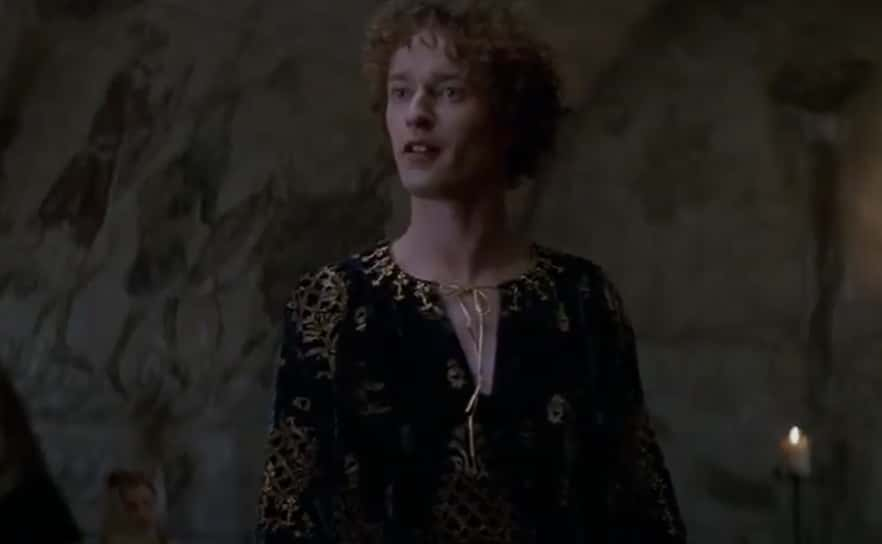 Braveheart(1995), Paramount Pictures
Braveheart(1995), Paramount Pictures
42. Surprising Reunion?
As if it wasn’t weird enough that Edward should receive a letter claiming that his father was still alive, something happened in 1338 which added a whole new layer to this conspiracy. That year, Edward traveled to Germany, then part of the Holy Roman Empire. While there, he met with a man who was named William (his surname has been disputed by historians).
The conspiracy theory states that William was none other than Edward’s father, the deposed king Edward II, in disguise. We will, of course, never know if that’s true, but it’s worth pointing out how dangerous it would have been to claim to be a deceased king back in those days. The outcome of Edward’s meeting with William has been lost to history, and we have no idea what happened to William after that meeting.
 World Without End (2012), Tandem Productions
World Without End (2012), Tandem Productions
Sources: 1, 2, 3, 4, 5, 6, 7, 8, 9, 10, 11, 12, 13, 14, 15, 16, 17, 18, 19, 20






